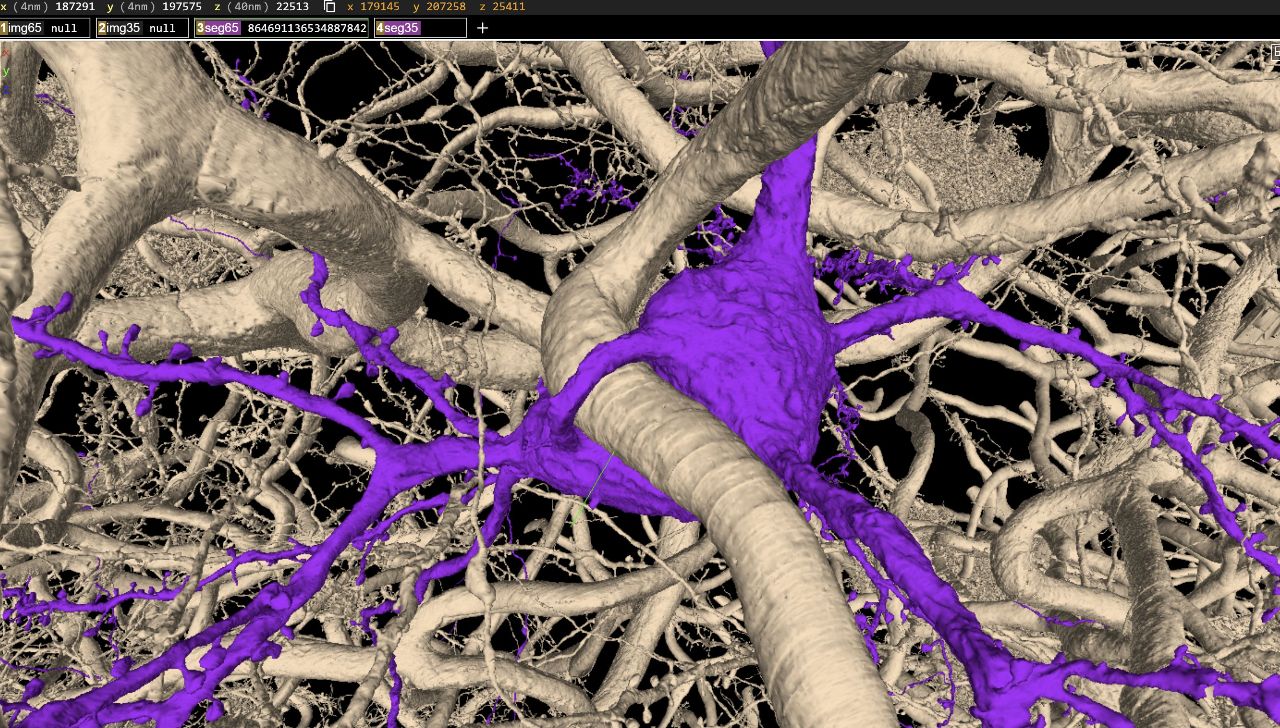Proofreader Evaluation and Analysis toolKit (PEAK) for Nanoscale Connectomics
Team: JHU APL: AGT Cohort
- Program: Applied Mathematics and Statistics
- Course: Other
Project Description:
The field of connectomics aims to map structural and functional connections in the brain
by recreating 3-D models (connectomes) of brain regions using 2-D imaging techniques obtained through electron microscopy. Segmentation algorithms may be implemented to realign images and map synaptic connections in these 3D models; however, due to the incredibly small scale of synaptic connections, these algorithms often face a multitude of unavoidable errors which must be identified and corrected through the efforts of artificial intelligence and human proofreaders.”Ground truth” is typically determined by expert proofreaders: proofreaders with an extensive education in neuroscience—but the number of expert proofreaders available is certainly limited. Large cohorts of new proofreaders are greatly needed, but training can be difficult and timeintensive, leading to a necessity for both assessing proofreader performance in an accurate, streamlined manner as well as determining new ground truth in a reliable manner. Current methods for deciding ground truth and evaluating proofreaders can be biased and provide an inaccurate portrayal of proofreaders. Our Proofreader Evaluation Analysis toolKit (PEAK) proposes a continuously learning algorithm which provides unbiased reflections of individual performance relative to other proofreaders, as well as a reliable way to determine new ground truth, independent of expert proofreaders past the first iteration.
Keywords: connectomics, proofreading, Bayesian inference, performance evaluation, Kernel Density
Student Team Members
- Krutal Patel
- Rupa Chalavadi
- Vivia Lung



